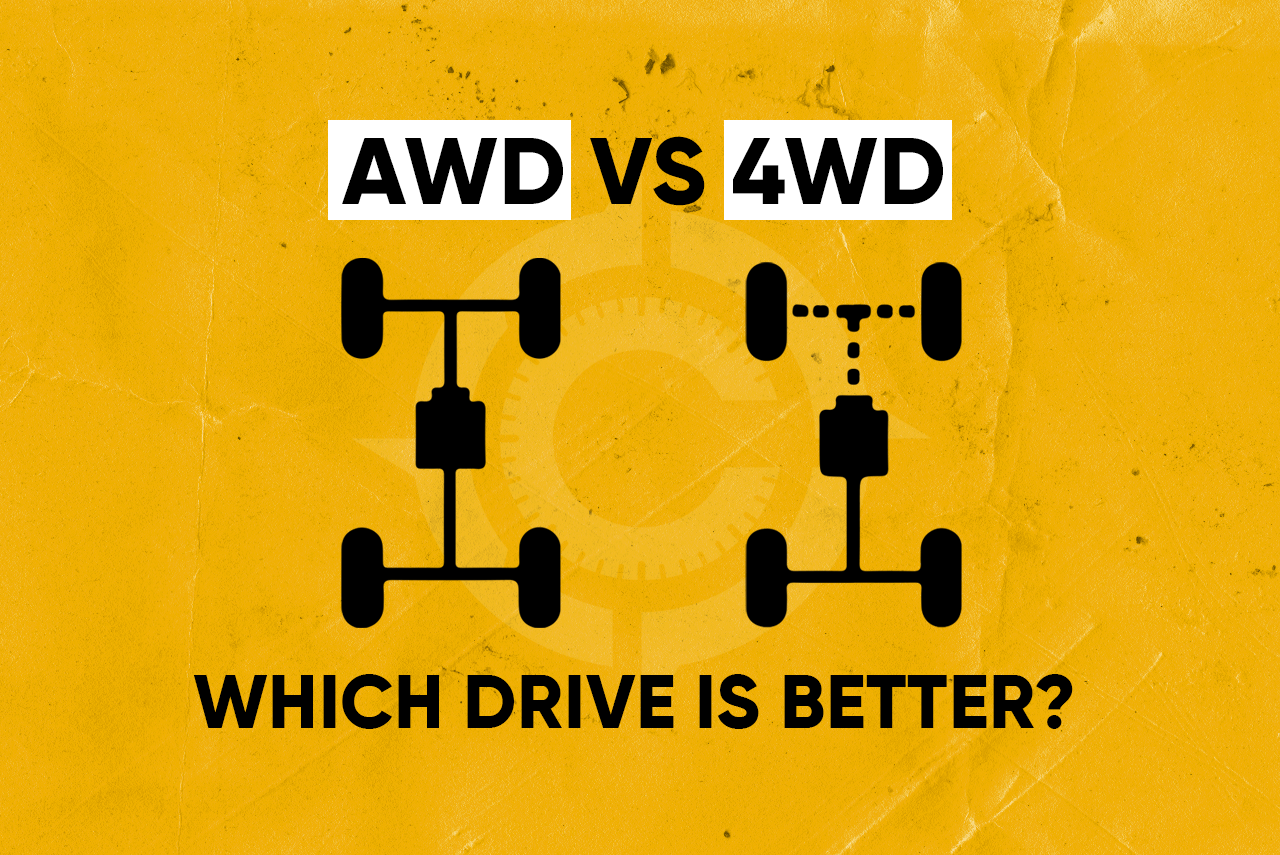AWD vs 4WD: which drive is better?

Many auto enthusiasts consider all-wheel drive an additional precaution measure in modern cars. From the standpoint of common sense, it is indeed so, yet there’s a difference between AWD and 4WD. What are the peculiarities of the two systems? Which drive should one choose when buying a car? Cargurus and Columbus professionals come to rescue.
Well, there are two types of all-wheel drive: AWD (All-Wheel Drive) and 4WD (Four-Wheel Drive), the latter sometimes designated as 4x4. No, they are not the same as it turns out.
4WD is best suited for off-road terrain and cargo hauling, while AWD performs best for daily commute.
More about differences between AWD and 4WD
Both types of all-wheel drive provide an upper hand in traction and steering the cars when compared to vehicles equipped with only two-wheel drive, front or rear (FWD or RWD, respectively).
AWD designation is used to mark the cars with four wheels in motion at all times or four wheels activated automatically, with no involvement on the driver’s behalf.
4WD, on the other hand, requires the driver to shift manually, meaning switching from 2WD to 4WD with a lever or button.
-
AWD is a permanent or automatically activated all-wheel drive. Vehicle with AWD nameplate has three differentials – front, center and rear. Thanks to them, thrust is distributed independently between every wheel. This provides great traction and steering under any weather conditions.
-
4WD (four-wheel drive) is a manually activated four-wheel drive (in modern cars, 4WD can be controlled digitally, with a manual switch always available). The system offers a transfer gearbox with downshift gears, which are shifted with either a separate lever, or with buttons (selectors). Such a gearbox helps increase the torque on the wheels, so you can overcome off-road slowly, but surely.
AWD: all-wheel drive for highway

The popularity of compact SUVs, crossovers and AWD-equipped cars has grown significantly because of the outstanding traction on all four wheels, especially in inclement and on slippery roads.
Many want to keep all-wheel drive on their cars even if they never go off the paved roads. The car makers play into customers’ wants, even though any given crossover is an off-road SUV only on paper. However, all-wheel drive automatics facilitates safe driving and helps in many situations on the open road.
4WD: all-wheel drive outside highway

Since 4WD systems usually require a driver to select a driving mode, which best fits the road conditions, they are mostly found in pickup trucks and SUVs. The ones for extreme use off-road in particular. Jeep Wrangler or Toyota 4Runner are a good example.
4WD looms victorious traction-wise over AWD, but is hardly of great help in a critical situation on the road, since it is activated only manually. However, 4WD excels in extreme conditions, like when one has to crawl across rugged off-road with having no decent traction on one, several or sometimes even most of the wheels.
AWD and 4WD on the snow
Cars with either type of all-wheel drive are handled better and accelerate faster on snowy roads than cars with rear (RWD) or front (FWD) wheel drive.
All-wheel drive is particularly good at taking turns on the winding winter roads, for it allows maintain control of the car.
AWD is optimized not only for dry tarmac, but also wet surfaces (puddles, slush, ice). Because of this, AWD is smoother and more effective than 4WD. When in motion, the system promptly redistributes the torque between all four wheels, which helps the car maintain stability.
4WD is more helpful at lower speeds and uneven terrain, places where traction is more important than stability. The system can re-route horse power towards one wheel if necessary. This comes in particularly handy off-road: the car will keep on moving even with three wheels off the surface.
All-wheel drive cannot stop!
Both AWD and 4WD provide stability of the vehicle and firm grip of the road, yet they do not improve the braking on wet and slippery surfaces. Automatics of no shape or form can substitute the right set of driving skills, which are fundamental to your safety behind the wheel. Moreover, AWD and 4WD can’t help vehicles with worn-down or “seasonally wrong” tires.
The line between AWD and 4WD in modern cars can be pretty blurred. Understanding advantages and shortcomings of either of these systems will help drivers figure which works best for theirs needs.
Keep in mind that AWD and 4WD systems of every car maker can function differently, therefore one should take a closer look at their individual peculiarities before committing to purchase.
Help in the service




















